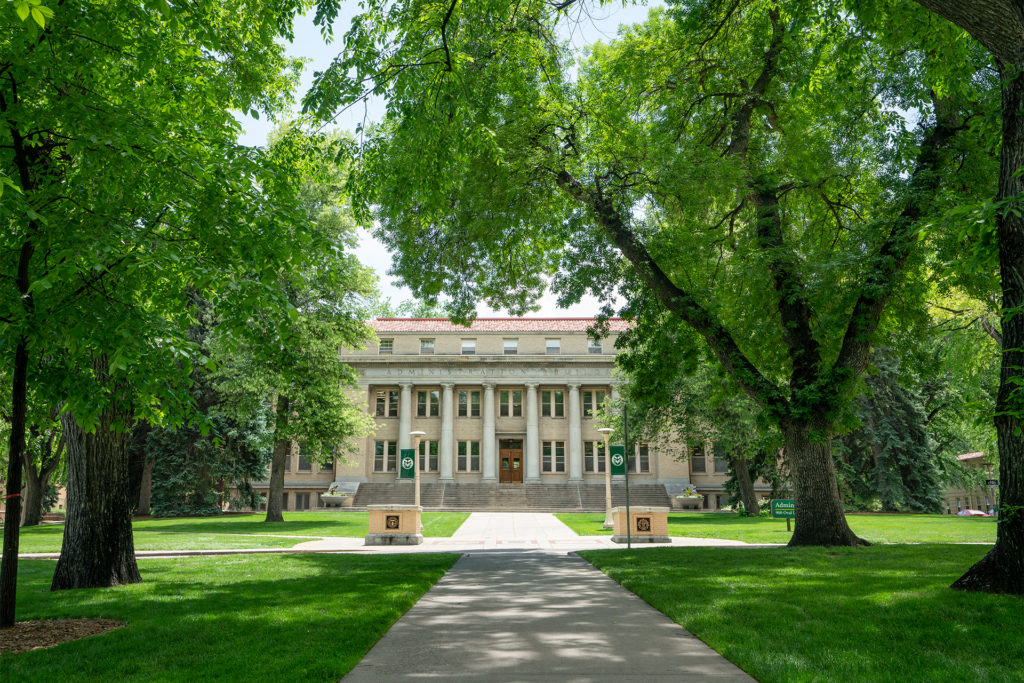
This week the CSU community got a preview of what the Board of Governors will vote on Thursday: a 2024-25 budget that is much improved over scenarios anticipated in January.
In January, CSU President Amy Parsons wrote in a campus-wide email that the university should prepare scenarios for budget reductions of 2%, 4% and 6%. Thanks to stronger-than-expected state funding, the actual budget reduction will be about 2.4% overall, but it won’t be evenly applied across the board, according to Brendan Hanlon, vice president for university operations and chief financial officer.
Hanlon gave a presentation on the budget at an April 30 open forum in the Lory Student Center, outlining several elements of the budget for the next fiscal year. State funding is increasing by 9.4%, similar to higher education leaders’ proposed 11% increase in state support. Undergraduate resident tuition is capped at 3%, and undergraduate nonresident tuition is expected to be 4%. Graduate student tuition for both residents and nonresidents will be limited to 3%, based on the market, Hanlon said. Financial aid allocations in the budget increase with tuition increases to ensure that aid does not erode against tuition costs.
If approved by the Board of Governors this week, faculty, administrative professionals and graduate assistants will see a 1% salary increase for 2024-25. Classified staff will receive 3% plus “step” pay raises based on time in their job series, as negotiated between the union Colorado WINS and the state.
Reasons for reductions
Hanlon said he and other CSU officials have met with deans, vice presidents and other leaders to discuss the reallocations. He said those reductions were done strategically to protect – or do the least amount of harm – to CSU employees and to the president’s top five priorities outlined last fall.
Hanlon explained that the budget cuts ranged anywhere from zero to 6%.
“We had a lot of difficult conversations, but a lot of thoughtful ones as well,” he said. “When we asked the campus to be thoughtful and strategic, we saw leaders step up and do that.”
Provost and Executive Vice President Marion Underwood noted that the budget decisions were driven by values, and leaders examined every budget proposal with a fine-tooth comb to minimize harm.
“We were thinking in terms of the president’s priorities – student success, democracy, academic and research excellence, institutional competitiveness, and impact around the state and the world,” she said.
As an example, Underwood said, nothing directly related to student success or CSU’s access mission was cut in the proposed budget, and no graduate teaching assistantships were eliminated.
Questions from attendees
During a question-and-answer period, Ellen Plese of the Department of Mechanical Engineering asked why there is still a need to make reallocations and give only 1% raises to most employees if the budget outlook has improved significantly. She said she’s heard everything from refinancing Canvas Stadium to a bond payment for a new veterinary complex to an ongoing deficit from the pandemic as reasons for the reductions.
Hanlon explained that funding for the stadium is handled separately in Athletics and is not part of CSU’s education and general budget. He said the final $2.7 million of the structural deficit caused by the pandemic is being paid off in the 2024-25 budget, and that the budget does include a $5.4 million bond payment for the Veterinary Health and Educational Complex project. That project, for the second-ranked veterinary medicine college in the country, is expected to secure a $50 million investment from the state through a bill that could be signed by Gov. Jared Polis as soon as this week.
Senior Vice President Rick Miranda added that there are inflationary expenses in areas like utilities costs, as well as ongoing funding for the Rural Initiative and Student Success Initiative, because 2023-24 is the last year of special funding from the Board of Governors for those efforts.
“The stadium is not part of the story,” Miranda said, adding that if CSU had an additional $20 million, half could go toward providing employees with a 3% raise pool, and the other half could erase the need for reductions.
Strategic investments
In response to a question about the $12.1 million slated for central investments in strategic initiatives, Hanlon said those include a math enhancement initiative with the College of Natural Sciences, an increase in base funding for the College of Business, facilities maintenance, initiatives designed to generate long-term revenue and other academic and operating budget needs.
“I appreciate the transparency,” said Faculty Council Chair Melinda Smith, a biology professor. She asked whether employee compensation will be a priority in the next budget-setting process, and Hanlon confirmed that it would, noting that the first version of the 2024-25 budget last October contained a 3% raise pool.
“We know how important that is to our employees,” he said.
Future budget forums are expected in the fall to continue the dialogue with campus.